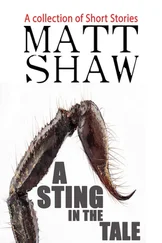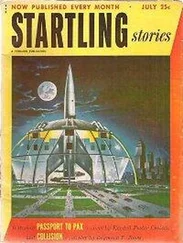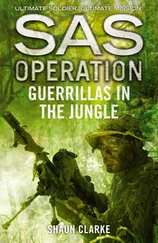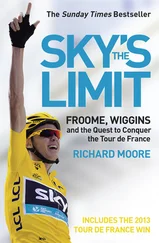“May I?” Ghazi asked, as he went to kneel down by the fuselage for a closer look. “So she has four engines that all work?”
“JetCat P120s. Course, the real B-52 have eight engines, four pairs, but they’re little compared to what you would see on a real 777. You know, for ETOPS, those mothers are huge. A man can stand upright in one and still be dwarfed. Amazing.”
“And this is all battery powered?” Ghazi asked.
“No, real Jet A-1 fuel. Plus a bunch of lithium batteries in sequence. The C-17 has four kerosene-fueled engines. That’s why we have this new requirement that we all have to carry fire extinguishers. Just another expense.”
Ghazi nodded, knowingly. He wandered down the flight line, amazed at the number and diversity of the model aircraft, and at their size. The owners were mostly middle-aged men, or older. They wore baseball hats with patches and buttons. Some wore old military-style jackets, but there were also teenagers in jeans and hoodies. The children, or maybe grandchildren, of the owners seemed just as enthusiastic as their elders. He stopped by one young man who was showing off to friends.
“Yeah, so I hacked the app for this Chinese RC model helicopter and made a few adjustments and, ta-da, now I can fly the Sukhoi from my iPad,” the teenager was explaining. The Sukhoi Su-35 Flanker was one of the bigger fighters on the strip. Painted up in Russian Air Force livery, it looked so real that Ghazi caught himself thinking about Gulliver’s Travels . Had he become a giant or had all the world’s aircraft been shrunk?
“Mind if I ask you a question?” Ghazi said to the three teenagers with the Sukhoi. They nodded and mumbled agreement. “What is this airplane made out of? Is it aluminum?”
The boys shook their heads, no. “That would be way too heavy, dude. It’s fiberglass mainly, some carbon fiber. And balsa wood. Got some metal parts, sure, but we try to keep the weight down so it can get off the ground and stay up for a while.”
While these people all looked like the quintessential American patriots, Ghazi thought, their allegiance to the United States did not seem to extend to all of their aircraft. There were several British Spitfires, at least one Japanese Zero, the French Concorde, and a Chinese flagged MiG-21. Ghazi had been to the Air and Space Museum on the Mall in Washington. This field in Chino, California, looked like someone had stolen the museum’s content and put it all in a miniaturizing machine.
As he walked down the line, aircraft continued to take off, perform aerobatics, and land. Speakers mounted on posts announced which aircraft was performing and who owned it. The crowd applauded often, although it was not all together clear to him what prompted some of the clapping. From what he could gather from the announcer, there were to be prizes given out later in the day.
“Are you Tom Harris?” he asked the man standing by the C-17.
“Pleased to meet you.”
“I heard that yours is the biggest aircraft here. Is that right?” Ghazi asked.
“For now. Jimmy Yang is working on an Airbus-380, you know, the one with the double deck. It’ll be a monster, like the real one,” Harris said.
“I was wondering, how long did it take you to build the C-17?” Ghazi asked.
“I call her the Globemaster II, that’s the Air Force designator. Took me about ten months, start to finish. Why, you thinking of trying to build something?”
Ghazi lowered his chin, looking dejected. “Well, I was, but I assume that as a first timer it would take me at least twice as long, but I don’t think we have two years.”
“Why not? It’s a great hobby. You can spend the nights out in the garage by yourself, with a little TV and a beer chiller. It’s probably saved my marriage, I’ll tell yah.”
“I’m sure, but it’s just that it’s for my nephew, Sanjay. He loves these planes. But the doctors aren’t sure how long he has. They told us one to three years, unless of course there is a breakthrough. Of course, we are all praying very hard to Jesus for a breakthrough. It would be a miracle of sorts,” Ghazi said.
The C-17 owner looked at Ghazi for a long time, thinking, nodding his head. “You know, Jesus acts in all kind of ways, through all kinds of people. Maybe it’s not always all that we pray for, but he knows best.”
“Yes, it’s true,” Ghazi replied. He stared down at the C-17.
“Tell you what,” the man said, “I’ve been thinking I need a new project. Thinking of building something bigger than Jimmy Yang’s 380. Otherwise my wife has her Honey Do list, you know? You think you could scrape together ten thousand? That’s about what it cost me, without the labor.”
“You would sell me your Globemaster II?” Ghazi seemed incredulous. “Then, yes, I could pay cash. I had a very good year. I am in venture capital. In Palo Alto. I would give you twelve thousand for her. She is a beauty and Sanjay will love it. It will give him a new burst of energy.”
The Globemaster pilot smiled broadly. “Have you got a pickup by any chance? May need that to pull the custom trailer.”
“I have a Ford 150 here. And, I can go back into town to the Bank of America and get the money in cash,” Ghazi offered.
“Now that’s just icing on the cake. No need to involve the IRS. You know, sometimes it’s little white lies that keep a marriage together. I may just tell Cynthia that the Globemaster crashed, otherwise she’ll be wanting some of the proceeds for her damn landscaping. She wants an underground irrigation system. That woman never leaves her garden.”
The men shook hands as red tri-winged aircraft flew low overhead. Now my squadron is complete, Ghazi thought, six beautiful, radio-controlled model planes, one of the best collections in the United States of America. “That’s Joel Rubin, he calls himself the Red Baron. We call him Snoopy.”
SUNDAY, DECEMBER 13
SOUTHWEST GATE, THE WHITE HOUSE
WASHINGTON, DC
Three large, green helicopters took off in sequence, headed south. It happened every Sunday afternoon. The First Family returning from Camp David, where the President and his wife liked to take the twins for the weekend. Ray Bowman was not allowed to enter until the “movement” was complete. As the three ships moved off, he inserted his badge into the card reader and punched in his PIN, nodded to the Uniformed Secret Service officer and walked up the snow-lined West Executive Avenue.
It was what one National Security Advisor had called the broadest narrow street in the world. On one side was more power than any one person had anywhere else, but also unrealistic expectation of what could be done with it. On the other side were the staff in the massive Eisenhower Executive Office Building, who knew the limits of power because they could never get everything done that the people across the alley wanted accomplished.
As he walked under the awning and into the ground floor of the West Wing, Ray thought about the job of the National Security Advisor. It had incredible scope and enormous influence, without all of the glare of media attention and the harassment of Congressional hearings. He wondered if, one day, he might be able to convince a President to let him have the job. To get there, he had to avoid disasters on his watch at the PEG. He knew that was not going to be easy.
Winston Burrell met him in a small conference room in the Situation Room. It seemed more like a private dining room for four, maybe six, except that in addition to all the dark wood there were lots of digital clocks and a very large flat screen. Burrell looked like an old city political boss, a rotund man in his early sixties, sitting in his little back room on a Sunday afternoon, receiving his ward leaders one at a time. In a way, Ray thought, that is what Winston Burrell was, more political than strategic, more boss than CEO. He saw his job as dealing with constituencies, here and abroad. For Burrell, Ray was an enforcer, someone he could trust to deal with difficult problems, discreetly, not someone he ever had to put on a State Dinner guest list.
Читать дальше












